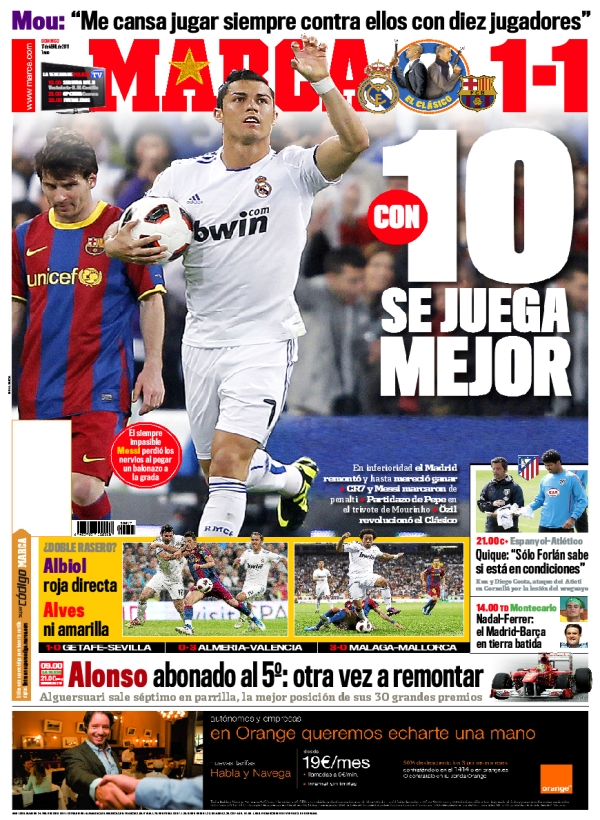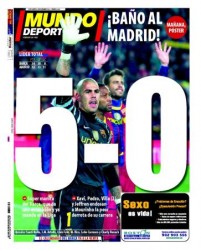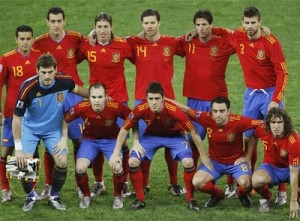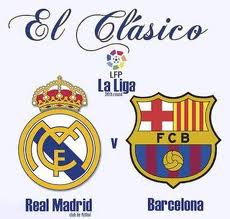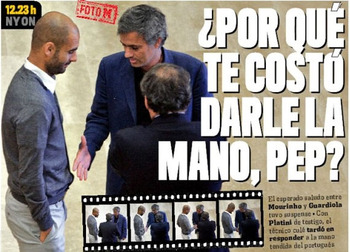Sean’s excellent postgame analysis of Wednesday’s tense and memorable Copa del Rey final included the video of Sergio Ramos dropping la Copa under the bus. Here is video from the match itself, followed by some micro-analyses of key sequences in the 1st half. We’ll follow up with commentary on the 2nd half and extra time highlights over the next couple days. Certainly prior to the next El Clásico (3 of 4)–back to the Estadio Santiago Bernabéu on Wednesday, for perhaps an even bigger match–the 1st leg of the Champions League semifinal matchup.
Comments on 1st half highlights:
The first highlight (0:00-0:50 of the clip, 11′ of the match) illustrates Madrid’s quick counterattacking in the opening half. The play is created in the initial 10 seconds–we suggest you watch that segment a few times: notice how Madrid left winger diMaria picks up the ball in a crowded space along the touchline and quickly splits a couple Barça defenders. In particular, he gets behind Barça’s attack-minded right wingback Dani Alves; the diMaria-Alves matchup on this side of the pitch is one to focus on.
Özil (#23) is initially standing inside towards the center, but as soon as diMaria breaks through, Özil sprints up the inside left channel, finding a seam of space in between Barcelona central back Pique (#3) and left wingback Adriano (#21). It’s a great run by Özil, with credit also due to diMaria for slotting the ball through into Özil’s path. Meanwhile, Cristiano Ronaldo is initially on the far side of the field very close to diMaria, but he sprints behind Özil’s run into the empty space in the center–the space that’s opened up when Pique steps towards diMaria’s penetration and Adriano chases Özil across.
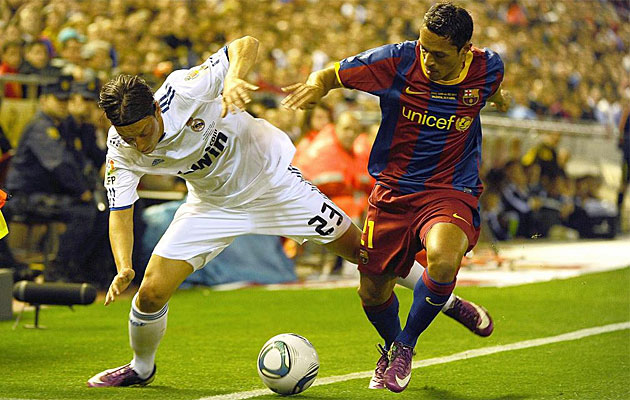
Özil receives the through ball on the left flank, does a little pirouette, and chips the ball over and across onto Ronaldo’s foot–note how the ball floats just over the head of Pique. The Catalan center back did well to recover towards the middle in an attempt to track Ronaldo’s run, but Özil’s ball was measured just right. Just those few seconds–the run, the turn, the pass– show the creativity in Özil’s movement, vision and passing that’s earning him such as praise in his first year at Madrid.
With a better first touch CR7 should have created an excellent chance to score here. Imagine how different the game would have been had he put Madrid up in the 11th minute–but his first touch betrayed him, and the ball skittered almost to the touchline. Ronaldo did well to still put the ball on net, but from a sharp angle, and by that time Barça’s defense had recovered, and Mascherano cleared off the line.

 Less than a week after their hard fought tie in league play, Madrid and Barça met in the final of the King’s Cup. Mourinho sent his defensive set into the midfield again, then put in Özil from the start for an added touch of creativity in attack, and sprinkled the whole side with an extra dose of aggression dust.
Less than a week after their hard fought tie in league play, Madrid and Barça met in the final of the King’s Cup. Mourinho sent his defensive set into the midfield again, then put in Özil from the start for an added touch of creativity in attack, and sprinkled the whole side with an extra dose of aggression dust.
